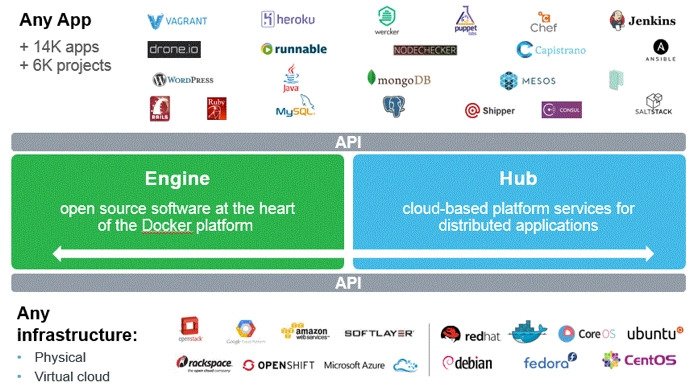


















Docker Platform
The Docker platform empowers virtualization of remaining workloads in a truly versatile manner, empowering circulated applications to cross the limits of servers. This is opposed to the virtualization of an entire working framework (OS) to support remaining workloads, as is seen in virtual machines (VMs). The Docker containerization framework uses a type of OS virtualization that uses the important pieces of the host system's OS. This virtualization assembles segments of a conveyed application stage that can run on Linux, Windows, and macOS. However, macOS PCs are restricted to use through Docker Desktop.
Docker Platform Core Components
The core of the Docker platform is Docker Engine, which is a runtime framework whose daemon executes the substance of Docker containers. Docker Engine transmits data between layers, the job that a hypervisor would act in a conventional VM environment. Docker Engine is not quite the same as a hypervisor in light of the fact that it straightforwardly cooperates with the server OS and compartment runtime frameworks. A VM hypervisor is isolated from the application runtime occasions by the virtualized OS of the distinctive VM cases.
A developer or DevOps proficient communicates with Docker Engine through the Docker Client, which might be run on a similar PC as Docker Engine (on account of an improvement domain) or through a remote shell.
Docker Machine permits establishment and the board of Docker Engine on virtual hosts with its own arrangement of orders. Hosts can be made on local Mac or Windows boxes, organization systems, data centers, or public cloud. The Docker Machine CLI can be utilized to run docker orders straightforwardly on a running, managed host. Prior to Docker Desktop, Docker Machine was the single direction to have Docker programming run on Mac or Windows PCs. After Docker v1.12, Docker Desktop turned into a preferred method to run Docker on PCs not running the Linux OS
Docker Desktop permits Mac and Windows clients to run Docker Engine, Swarm, and even Kubernetes (as an option in contrast to Docker Swarm) on their PC. For PCs with Windows OS, clients can create Windows and Linux holders. It can likewise set up and tear down lightweight VMs on both working frameworks
One spot to get Docker compartment images is from Docker Hub. An engineer can utilize this free, facilitated image library as an asset that requires no support. It offers prepared to-run open-source remaining tasks at hand inside holders that can be pulled, formed, and run from Docker Engine or the Docker Client. Be that as it may, an engineer might need to have more power over where their pictures are put away, to claim the circulation pipeline completely, and incorporate those two components into their organization's DevOps work process. In that condition, the Docker Registry is the better choice. For additional security, Docker Trusted Registry (DTR) is accessible to endeavors as an approach to store pictures behind its private cloud or on-premises server farm firewall. DTR isn't free and is one of only a handful barely any Docker Inc. innovations that must be paid for.


